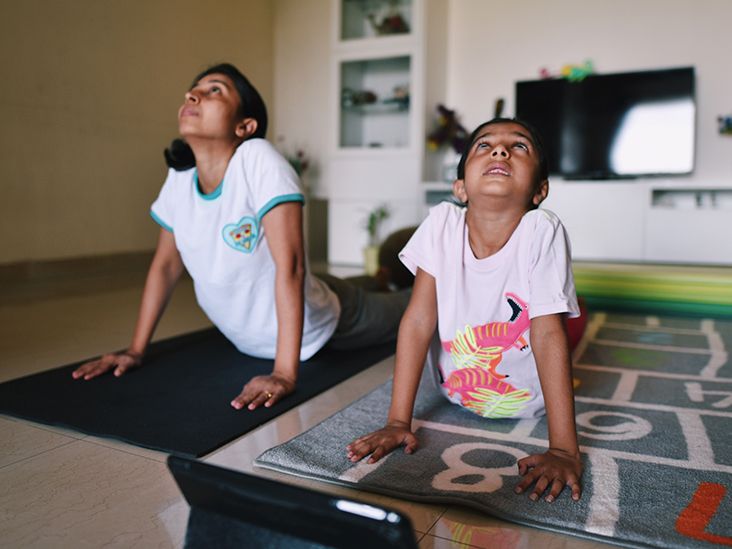Although not common, narcolepsy can be extremely disruptive for kids and frustratingly difficult to diagnose.
Narcolepsy is a rare and lifelong sleep disorder. The main symptom is chronic attacks of irresistible daytime sleepiness that can last seconds to minutes. The term “narcolepsy” comes from two Greek words: “narcos,” which loosely means sleepiness, and “lepsy,” which means seized.
Understanding narcolepsy can help you and your child learn to manage the disorder.
There are two major types of narcolepsy:
- type 1 narcolepsy (formerly “narcolepsy with cataplexy“)
- type 2 narcolepsy (formerly “narcolepsy without cataplexy”)
Secondary narcolepsy
Cataplexy is sudden muscle weakness. It can be as slight as droopy eyelids, or as extreme as a total collapse of the body. In all cases, the person remains conscious. Intense emotions like laughter, stress, or excitement can
Older research estimates that about
A 2023 study found among U.S. adults, narcolepsy affects 12.6 out of 100,000 (type 1) and 25.1 out of 100,000 (type 2). Among kids ages 6 to 17 in the U.S., 10 in 100,000 had one form of narcolepsy, according to a 2024 study of insurance claims. Nearly 70% of those had type 2.
Because its symptoms are challenging to recognize and related to so many other diagnoses, narcolepsy may take many years to diagnose. Let’s look at typical narcolepsy symptoms and then focus on how these symptoms affect children and adolescents.
Overall symptoms of narcolepsy
- extreme sleepiness or an irresistible urge to fall asleep, especially with passive activities like reading
- cataplexy or sudden muscle weakness, which often comes at moments of strong emotions such as laughter, anger, or surprise
- frightening hallucinations when falling asleep or waking up
- sleep paralysis when waking up
- waking up frequently
Narcolepsy symptoms in children
Many of the major symptoms of narcolepsy can indicate other disorders. But cataplexy is almost unique to narcolepsy.
In children, episodes of cataplexy can be confused with normal falls or clumsiness. You might consider speaking with your child’s teacher to check if your child has cataplexy episodes in school, trouble focusing, or a tendency to fall asleep in class.
Research on narcolepsy in children highlights some experiences and medical conditions that appear to be more common among children with narcolepsy compared to kids who don’t have it. Symptoms of narcolepsy might also look different in children compared to adults. Some common experiences among children with narcolepsy are:
- cataplexy with unusual facial expressions, tongue sticking out, slurred speech, and restless, fidgety twitches
- early puberty
- attention deficit hyperactivity disorder (ADHD) or oppositional defiant disorder(ODD)
- social isolation
- academic difficulties
- depression or mood challenges
- rapid weight gain
Children tend to become irritable, hyperactive, and spaced out when they get sleepy. These behaviors are also typical reactions to the extreme sleepiness that characterizes narcolepsy. Given the overlap, it’s easy to misinterpret their reactions as behavioral or neurological conditions such as ADHD and to miss the correct diagnosis.
Adolescents and teens often don’t get enough sleep, so diagnosing excessive daytime sleepiness as a symptom of narcolepsy can be especially difficult. A 2023 study found that teens with narcolepsy can experience severe fatigue, which can lead to lower moods which, in turn, lead to disconnection from social networks.
According to the
Although researchers aren’t completely sure what causes it, there’s increasing evidence that narcolepsy
In type 1, almost all brain neurons that contain the hormone hypocretin, also called orexin, are lost. Hypocretin is involved in the sleep cycle and promotes wakefulness. In type 2, people might still have these neurons with hypocretin, so the cause of type 2 remains unclear.
Family history and brain injuries might also
Does narcolepsy run in families?
According to the
Reaching a diagnosis for your child may take time because of the multiple tests that are involved. Knowing that you’re taking care of your child can help you both make it through the testing.
- Physical exam: Your doctor will begin by examining your child physically and by taking their medical history. They’ll likely ask if other family members have experienced symptoms like your child, or if they have an official narcolepsy diagnosis.
- Sleep journal: You will probably be asked to keep a sleep journal for your child for 1 or 2 weeks. Be prepared to jot down the times that your child sleeps and any other symptoms. Remember that in children, nighttime hallucinations can be easily misinterpreted as nightmares.
- Blood tests: Your doctor may order blood work, including a complete blood count, thyroid function tests, and certain genetic tests to rule out other conditions.
- Polysomnogram sleep test (PSG): This overnight test records your child’s heart rate, oxygen levels, breathing, physical movement, and brain waves while they sleep. It helps doctors see if your child’s rapid eye movement (REM) sleep is happening too early in their sleep cycle. It also helps to rule out other conditions that may affect your child’s sleep, such as sleep apnea.
- Multiple sleep latency test (MSLT): This test is done the day after the PSG. Your child will be asked to take 5 short naps separated by 2 hours over the course of the day. Doctors check to see how quickly your child falls asleep and when the REM sleep happens.
Several medications can be used to treat narcolepsy. Many of the medicines that healthcare professionals use to treat narcolepsy in adults might not be safe or effective in children. You can discuss possible medication options for your child with a healthcare pro and weigh the risks and potential effectiveness.
According to a 2022 paper, here are some of the medicines that might be prescribed for pediatric narcolepsy:
- Amphetamine-like stimulants: Methylphenidate is widely prescribed.
- Antidepressants: Some antidepressants, such as imipramine, may be effective.
- Sodium oxybate (also known as gamma hydroxybutyrate or GHB): This is a strong sedative, and its distribution is restricted.
Regardless of which medication your child takes, be careful to store all medications out of reach and supervise your child when taking them.
It’s also worth noting that some of these medications are considered controlled substances. A medical team must monitor anyone taking medications like methylphenidate closely, due to potential side effects and risk of misuse. Your doctor can discuss with you if these potential drawbacks are worth the benefits they can bring.
Speak with your doctor if you have questions about your child’s medication or any side effects.
Don’t forget!
Talk with a healthcare professional about whether your child should take dietary supplements while they are on medications. According to the
Lifestyle adjustments can help you and your child learn to live with narcolepsy. Here are some tips to help:
- Practice good sleep habits: Sticking to regular sleep and wake times can help your child get the sleep that they need.
- Relax before bedtime: Spending time with your child before bedtime can improve the quality of their sleep.
- Take naps: Scheduled naps can help with extreme sleepiness.
- Get regular exercise: Exercise can help your child get quality sleep.
- Avoid caffeine: Caffeine in sodas or other beverages can disrupt their usual circadian rhythms.
Children who live with narcolepsy face academic, psychosocial, and psychiatric challenges.
Many children experience memory or concentration difficulties that can impact school performance. Anxiety, depression, and social difficulties are all reported among youth with narcolepsy. Proper diagnosis and treatment can lead to a path of managing the condition.
Living with narcolepsy
Narcolepsy is a condition that thousands of people across the world are living with. Your child may find it interesting to learn about famous figures like civil rights leader Harriet Tubman, French athlete Franck Bouyer, award-winning sci-fi author Teresa Nielsen Hayden, or talk show host Jimmy Kimmel, who all have or had narcolepsy.
It can also be helpful to connect with other people with narcolepsy. Several nonprofit organizations are dedicated to providing resources and support groups for people with narcolepsy, including:
Children can tell when something is going on. Trying to keep things hidden can add to their anxiety and make them feel that it’s their fault. You can help them deal with narcolepsy by giving them honest, age-appropriate information, and by encouraging them to ask questions.
The “Talking to Kids about Narcolepsy” book series by Amanda Stock can help you explain narcolepsy to your child. Look for the titles “Sometimes My Socks Are in the Freezer” and “Sometimes Mommy Falls” at your local library or bookseller.
Supporting someone with a chronic condition can be challenging. Make sure to take time out to recharge yourself. That way, you’ll be able to be more present for your child, support them on their journey, and show them how they can live a full and satisfying life with their condition.
While the causes of narcolepsy in children aren’t fully understood, when symptoms develop, they’re similar to those seen in adults. While it can be difficult to tell narcolepsy from a lack of sleep, cataplexy (or muscle weakness) can be a unique signifier for narcolepsy.
If you suspect that your child may be displaying symptoms of narcolepsy, schedule an appointment with your regular medical professional to discuss the symptoms and what may be causing them.









